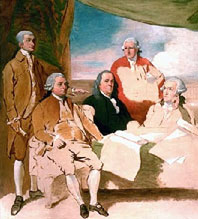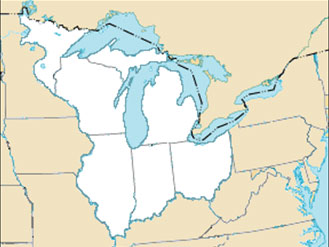
Source: Treaty of Paris by Benjamin West, Wikimedia
At the beginning of this resource, two versions of the United States in 1787 were presented. One of them, as you should recall, presented a prosperous America that offered economic opportunity to many. This meant that life under the Articles of Confederation was certainly not all bad. In fact, when focused on the weaknesses of the Articles, it is easy to simply dismiss it as a total failure. That was not the case.
The Articles of Confederation era can lay claim to two major successes that are worth noting:

Source: Treaty of Paris by Benjamin West, Wikimedia
Survival of the U.S.
The Congress, established under the Articles of Confederation, successfully completed the Revolutionary War, negotiated a peace treaty with England, and managed to maintain enough of a spirit of national unity that people wanted to reform the system and create a Constitution. If things had really fallen apart, people in 1787 might have thought it better to let the states separate into individual nations. That did not happen.
Settling of the West
The Congress passed—and successfully enforced—two major pieces of legislation in regards to the settling of the West, the Land Ordinance of 1785 and the Northwest Ordinance of 1787. In this one area, the states largely agreed that it was the responsibility of the national government to determine how to admit new territories into the union. That left room for some important legislation.
The Northwest Ordinance and Land Ordinance were written by. They provided for the organized settlement of the Ohio River Valley and other Western territories. The settlements set aside land for public schools and, more importantly, did not permit slavery.
These laws also said that when a settlement reached 60,000 people, it could apply for statehood on equal terms of the 13 colonies.

The Northwest Ordinance of 1787 governed the settlement of the territory that became the white states in the map above. Can you name them? Interactive popup. Assistance may be required.

Review
The Articles of Confederation provided the United States' first system of government. It regarded the states as sovereign powers, bound together into a "firm league of friendship with each other, for their common defense, the security of their liberties, and their mutual and general welfare (Article III)." This league of friendship kept most of the power within the states.
The following table summarizes the strengths and weaknesses of the Articles of Confederation:
Strengths |
Weaknesses |
|
|
→ Final Reflection: Of all the weaknesses of the Articles of Confederation, which do you think was most responsible for its downfall?